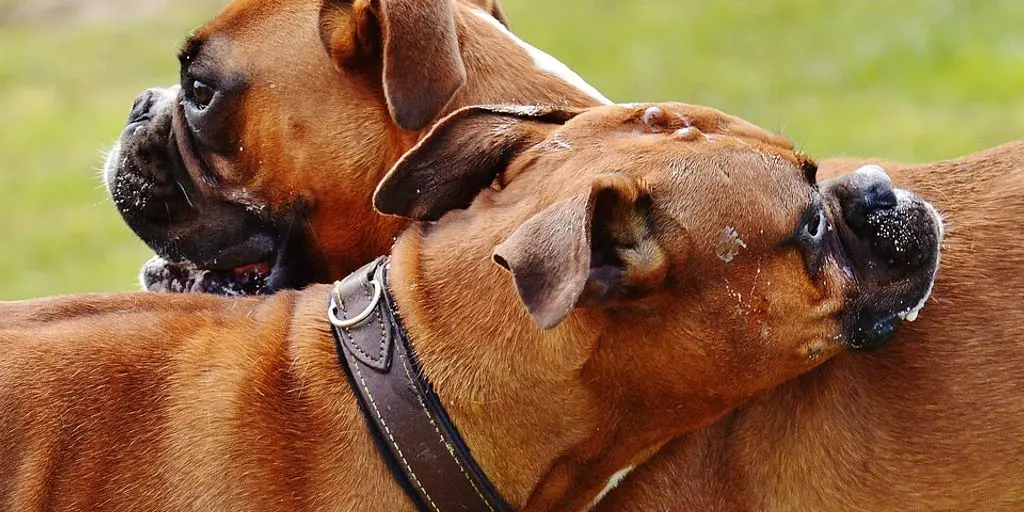Feeding your dog a raw diet can be a game-changer for their overall health and well-being. This article delves into a comprehensive raw beef and chicken neck dog food recipe suitable for all life stages, from puppies to senior dogs. By understanding the benefits, choosing the right ingredients, and following proper preparation and feeding guidelines, you can ensure your furry friend enjoys a nutritious and balanced diet.
Key Takeaways
- Raw beef and chicken necks provide essential nutrients that support your dog’s overall health.
- Feeding raw food can improve your dog’s dental and digestive health.
- It’s crucial to select high-quality ingredients and avoid harmful additives.
- Proper preparation and storage of raw dog food are essential to maintain its nutritional value.
- Regular monitoring and adjustments based on your dog’s health and life stage are important for long-term success.
Benefits of Raw Beef and Chicken Neck for Dogs
Nutritional Value
Feeding your dog raw beef and chicken necks can be a game-changer. These ingredients are packed with essential nutrients that support your dog’s overall health. Raw beef is rich in protein, which is crucial for muscle development and repair. Chicken necks, on the other hand, provide a good source of calcium, which is vital for bone health. Together, they offer a balanced diet that can meet the nutritional needs of dogs at all life stages.
Dental Health
One of the often-overlooked benefits of feeding raw chicken necks is improved dental health. The act of chewing on these bones helps to clean your dog’s teeth naturally. This can reduce the buildup of plaque and tartar, leading to healthier gums and fresher breath. Plus, it’s a fun and engaging way for your dog to maintain oral hygiene.
Digestive Health
Raw diets, including beef and chicken necks, can be easier on your dog’s digestive system compared to processed foods. The natural enzymes in raw meat aid in digestion, making it easier for your dog to absorb nutrients. This can lead to improved digestion, a lustrous coat, and increased energy levels. If your dog has a sensitive stomach, transitioning to a raw diet might be the solution you’ve been looking for.
Switching to a raw diet can offer multiple health benefits for your dog, from better digestion to a shinier coat and more energy.
Choosing the Right Ingredients
Selecting Quality Beef
When it comes to picking beef for your dog’s raw food, quality is key. Always opt for grass-fed beef if possible. It’s richer in essential nutrients and free from harmful chemicals. Look for cuts that are fresh and have a good color. Avoid any meat that looks discolored or has an off smell.
Finding Safe Chicken Necks
Chicken necks are a great source of calcium and other nutrients, but safety is crucial. Make sure to buy from reputable sources to avoid any contamination. Freshness is important, so check the packaging date and ensure the necks are stored properly. If you’re unsure, ask your butcher for advice.
Avoiding Harmful Additives
One of the benefits of making your own dog food is that you can control what goes into it. Avoid any additives that could be harmful to your dog. This includes preservatives, artificial colors, and flavors. Stick to natural, whole ingredients to keep your dog healthy and happy.
Keeping a journal of your homemade recipes, your dog’s bowel movement, and their taste preferences will help you narrow down your recipes to the ones you know work well.
Preparing the Raw Beef and Chicken Neck Recipe
Necessary Kitchen Tools
Before diving into the recipe, make sure you have all the essential kitchen tools. You’ll need a sharp knife, cutting board, meat grinder, and mixing bowls. Having the right tools makes the process smoother and more efficient.
Step-by-Step Preparation
- Start by washing your hands and sanitizing your workspace. Food safety is crucial when handling raw meat.
- Cut the beef into small, manageable pieces. This makes it easier to grind and mix later on.
- Grind the beef using a meat grinder. If you don’t have one, you can ask your butcher to grind it for you.
- Add the chicken necks to the ground beef. Mix thoroughly to ensure an even distribution of meat and bone.
- Portion the mixture into meal-sized servings. This makes feeding time more convenient and ensures your dog gets a balanced meal every time.
Pro Tip: If you’re adding an omega-3 supplement to your dog’s diet, add it at meal time. This will help balance your dog’s fatty acids without the risk of the oil going rancid.
Storage Tips
Proper storage is key to maintaining the freshness and nutritional value of your homemade dog food. Store the portions in airtight containers and keep them in the freezer. Thaw each portion in the refrigerator before serving. This method helps avoid bacterial contamination and keeps the food safe for your dog to eat.
Feeding Guidelines for All Life Stages

Feeding your dog a raw diet can be beneficial at any stage of their life, but it’s important to adjust the portions and nutrients based on their age and activity level. Here’s a quick guide to help you out.
Puppies
Puppies are growing rapidly and need more calories and nutrients than adult dogs. Aim to feed them 2-3 times a day. Make sure their diet includes plenty of omega fatty acids like DHA and EPA to support cognitive development.
Adult Dogs
For adult dogs, the focus should be on maintaining a balanced diet that supports their energy levels and overall health. Typically, feeding them twice a day works well. Adjust the portions based on their activity level to avoid overfeeding.
Senior Dogs
Senior dogs have different nutritional needs compared to younger dogs. They may require fewer calories but more specific nutrients to support joint health and overall well-being. Consider feeding them smaller, more frequent meals to aid digestion.
Remember, every dog is unique. Regular vet check-ups can help you tailor their diet to their specific needs.
Supplementing the Raw Diet
When feeding your dog a raw diet, it’s essential to ensure they get all the necessary nutrients. While raw beef and chicken necks provide a solid foundation, supplements can help fill any nutritional gaps. Here are some key supplements to consider adding to your dog’s diet.
Essential Vitamins and Minerals
Even with a balanced raw diet, your dog might still need additional vitamins and minerals. Daily raw complete powder can be a great addition. Introduce it slowly and build up to the recommended daily amount. This ensures your dog gets a well-rounded intake of essential nutrients.
Omega-3 Fatty Acids
Omega-3 fatty acids are crucial for maintaining your dog’s skin and coat health. You can add fish oil or flaxseed oil to their meals. These supplements also support joint health and can reduce inflammation.
Probiotics
Probiotics are beneficial for your dog’s digestive system. They help maintain a healthy gut flora, which is vital for nutrient absorption and overall health. You can find probiotic supplements specifically designed for dogs, or you can use natural sources like yogurt or kefir.
Remember, always consult with your vet before introducing new supplements to your dog’s diet. They can provide personalized recommendations based on your dog’s specific needs and health conditions.
Common Mistakes to Avoid
Feeding your dog a raw diet can be incredibly beneficial, but there are some common mistakes you should avoid to ensure your furry friend stays healthy and happy. Avoiding these pitfalls can make a big difference in your dog’s overall well-being.
Overfeeding
One of the most common mistakes is overfeeding. It’s easy to think that more food equals a happier dog, but that’s not the case. Overfeeding can lead to obesity and other health issues. Make sure to follow the recommended portion sizes for your dog’s weight and activity level.
Improper Storage
Improper storage of raw food can lead to bacterial contamination, which is dangerous for both you and your dog. Always store raw food in airtight containers and keep it frozen until you’re ready to use it. Thaw it in the refrigerator, not on the counter, to avoid any bacterial growth.
Ignoring Food Safety
Food safety is crucial when preparing raw meals. Always wash your hands, utensils, and surfaces thoroughly to prevent cross-contamination. Keep raw dog food separate from human foods to avoid any health risks.
Keeping a journal of your homemade recipes, your dog’s bowel movement, and their taste preferences will help you narrow down your recipes to the ones you know work well.
By being mindful of these common mistakes, you can ensure that your dog enjoys the full benefits of a raw diet without any of the drawbacks.
Monitoring Your Dog’s Health

Keeping an eye on your dog’s health is crucial, especially when feeding a raw diet. Here are some tips to ensure your furry friend stays in top shape.
Cost-Effective Tips for Raw Feeding
Feeding your dog a raw diet doesn’t have to break the bank. Here are some tips to keep it affordable while ensuring your furry friend gets all the nutrients they need.
Buying in Bulk
Purchasing ingredients in bulk can save you a significant amount of money. Look for wholesale suppliers or local farms where you can buy large quantities of meat at a lower price. Buying in bulk not only reduces cost but also ensures you always have fresh ingredients on hand.
Seasonal Discounts
Take advantage of seasonal discounts and sales. Many stores offer lower prices on certain meats during specific times of the year. Stock up during these sales to save money in the long run.
Homemade Treats
Making your own dog treats at home is not only cost-effective but also allows you to control the ingredients. You can use leftover meat or organs from your raw food prep to create delicious and healthy treats for your dog.
Preparing healthy homemade dog food on a budget is no rocket science if you have the right tips and tricks. With a little planning, you can provide your dog with a nutritious diet without overspending.
Transitioning to a Raw Diet
Switching your dog to a raw diet can be a bit of a journey, but it’s definitely worth it. Gradual transitions are key to making sure your pup’s digestive system adjusts smoothly. Start by mixing small amounts of raw food with their current diet and slowly increase the proportion over several days. This method helps avoid any digestive upsets and makes the transition easier for your dog.
Gradual Introduction
When introducing raw food, patience is crucial. Begin with a small portion of raw food mixed with your dog’s regular meal. Over the course of a week or two, gradually increase the amount of raw food while decreasing the old food. This slow introduction helps your dog’s digestive system adapt without causing any major issues.
Handling Food Sensitivities
Every dog is different, and some might have food sensitivities. Keep an eye on your dog’s reactions to the new diet. If you notice any signs of discomfort or allergies, such as itching or digestive problems, consult your vet. They can help you tweak the diet to better suit your dog’s needs.
Maintaining Consistency
Consistency is vital when transitioning to a raw diet. Stick to a feeding schedule and try to keep the types of raw food consistent. This helps your dog know what to expect and can make the transition smoother. Keeping a journal of your dog’s reactions and preferences can also be helpful in fine-tuning their diet.
Remember, transitioning to a raw diet is a process. Take it slow and pay attention to your dog’s needs. The goal is to make the switch as smooth and beneficial as possible for your furry friend.
Addressing Concerns About Raw Feeding
Feeding your dog a raw diet can be a bit nerve-wracking, especially with all the concerns floating around. Let’s tackle some of the big ones head-on so you can feel more confident about your choice.
Success Stories from Dog Owners
Improved Coat Health
Switching to a raw beef and chicken neck diet has done wonders for my dog’s coat. It’s now shinier and softer than ever before. I couldn’t believe the transformation. The natural oils in the raw meat seem to make a huge difference.
Increased Energy Levels
Before the diet change, my dog was pretty lethargic. Now, he’s full of energy and always ready to play. It’s like he’s a puppy again! The raw diet has definitely given him a new lease on life.
Better Digestion
My dog used to have a lot of digestive issues, but since switching to raw food, his digestion has improved significantly. No more upset stomachs or irregular bowel movements. It’s been a game-changer for us.
For a small dog, a chicken breast is great as it has lots of meat and just the right amount of bone for a meal. You can adjust the amount you feed according to your dog’s needs.
Highlights
- Shinier and softer coat
- Increased energy levels
- Improved digestion
Conclusion
Feeding your dog a raw diet like the Raw Beef & Chicken Neck Dog Food Recipe can be a game-changer for their overall health and well-being. This recipe is packed with essential nutrients and is suitable for dogs of all life stages, from energetic puppies to wise old seniors. Not only does it provide a balanced diet, but it also offers the joy of chewing on real bones, which can be great for dental health. Remember, every dog is unique, so always monitor your furry friend’s health and consult with your vet to make any necessary adjustments. Happy feeding!
Frequently Asked Questions
Is raw beef and chicken neck safe for all dog breeds?
Yes, raw beef and chicken neck can be safe for all dog breeds if prepared and handled properly. Always consult your vet before making any dietary changes.
How often should I feed my dog raw beef and chicken neck?
The frequency depends on your dog’s age, size, and activity level. Generally, it’s recommended to feed raw meals 1-2 times a day. Consult with your vet for personalized advice.
Can puppies eat raw beef and chicken neck?
Yes, puppies can eat raw beef and chicken neck. Ensure the portions are appropriate for their size and monitor them while eating to prevent choking.
What are the benefits of feeding my dog raw beef and chicken neck?
Benefits include improved dental health, better digestion, and a more balanced nutritional intake. Raw diets can also lead to shinier coats and increased energy levels.
How do I store raw beef and chicken neck dog food?
Store raw beef and chicken neck dog food in airtight containers in the refrigerator for up to 3 days or freeze it for longer storage. Always thaw in the refrigerator before serving.
Are there any risks associated with raw feeding?
Risks include bacterial contamination and choking hazards from bones. Always handle raw food with care and consult your vet to ensure a balanced diet.
Can I mix raw beef and chicken neck with kibble?
While some owners do mix raw and kibble, it’s best to feed them separately to avoid digestive issues. Consult with your vet for the best feeding strategy.
What supplements should I add to a raw beef and chicken neck diet?
Essential supplements may include omega-3 fatty acids, probiotics, and vitamins and minerals. Consult your vet for a tailored supplement plan.



